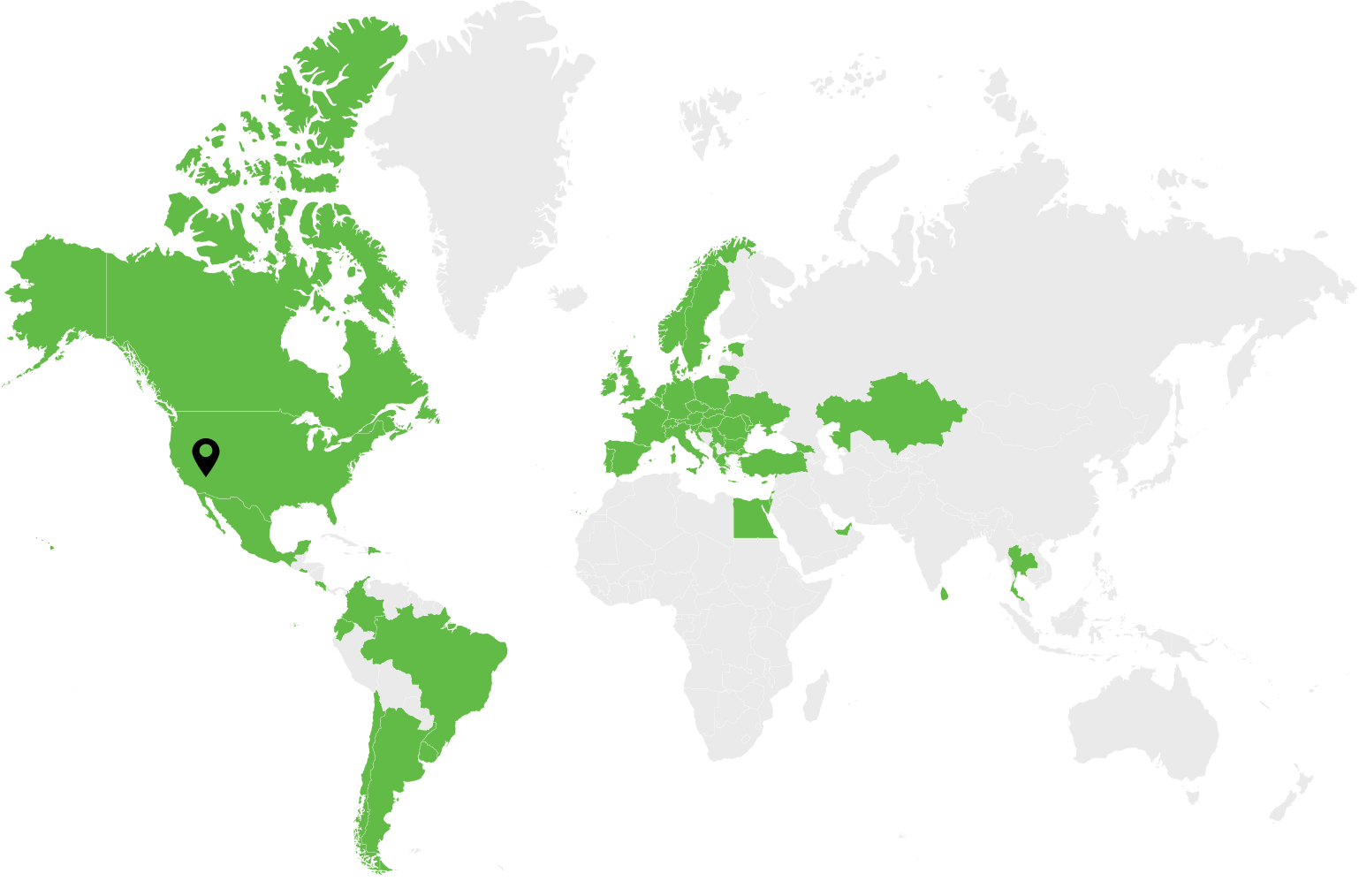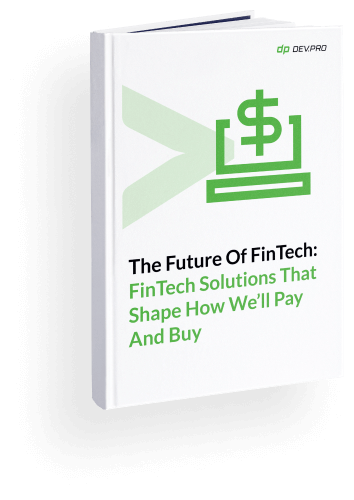Restaurant Management Software comes with different functions and forms: from the very general, like POS systems, to specific ones like table booking engines, payroll management, IoT devices integrations, and fast food automation. There is custom restaurant software for franchise chains that costs millions of dollars to develop and vendor-made SaaS solutions for mom-and-pop cafes that costs $30 a month.
According to the most recent study from Grand View Research, the restaurant management software market is forecasted to reach $4.56 billion in 2022, up from $4.08 billion last year. The CAGR for the forecasted period is rather ambitious at 15.8%, so that by 2030 the industry is expected to grow to $14.7 billion.
Cloud computing, IoT, contactless payments, computer vision, voice recognition, big data, and AI all contribute to this nimble growth. At the same time, security concerns, new data protection regulations, new post-Covid reality, more complex integrations present new more nuanced challenges for the industry.
TLDR: if you manage a restaurant, your business needs at least one of these solutions to prosper, be competitive, drive growth, and increase loyalty among customers and team alike. This quick yet thorough overview will help you decide what the best restaurant management software is in your specific case.
Defining Restaurant Management Software in 2022
Depending on who you ask, the definition of what falls under this category will differ widely. A large food franchise owner will require a sophisticated network of custom-made technical solutions that include accounting, payroll, scheduling, reservation, payment, and marketing functions. At the same time a family diner will require a mobile POS at an affordable monthly subscription.
Let’s start with an across-the board definition to align expectations for this overview.
What is RMS?
Restaurant Management Software is any system that is used in the restaurant business to manage clients, team, or vendor relationships. It usually includes menu engineering, food ordering, payment, team scheduling, inventory management, accounting, loyalty, marketing, and kitchen automation. These systems can be custom built to suit the requirements of a specific food operator or vendor made for a wide variety of business types. There are cloud, on-premise, and hybrid solutions. Ideally, all such software systems will be integrated to enable better visibility and real-time overview of operations.
Types of Restaurant Software
It’s not uncommon for some platforms to combine several features and functions. This happens frequently with SaaS systems for SME, which will have basic modules for menu, human resources, and invoice management.
These are the major types of software platforms for food service industry by deployment, end user, and features:
By deployment
- Cloud
- Hybrid
- On-premise
By product development
- Custom-made restaurant management software
- Ready-made SaaS systems for restaurants
- Customizable vendor solutions
By the end user
- Client facing
- Internal
- Third-party portals
By function
- Accounting
- Payroll
- Payment
- Booking & reservations
- CRM & marketing
- POS
- HRM & scheduling
- Menu & inventory management
- Connected kitchens & automation
- Marketing
- Reporting & analytics
- IoT integration

Let’s consider the critical aspects you should account for when choosing the right software systems for your food service business.
What to Look For to Choose the Best Restaurant Software For Your Case
Here is a quick checklist of factors that should be considered when selecting the right systems to run your eatery, listed in order of importance.
Size: Mom & Pops vs Franchise Networks
The smaller your operation, the greater the chance that you will be fine with a one-stop-shop SaaS solution that includes everything: from POS features and table management to basic accounting and invoicing features.
The more outlets, teams, vendors, and menu items you have, the more complex a solution you need to manage each of the functions from human resources, purchasing to menu engineering.
Price: Cloud-Blessed SaaS Monthly Subscriptions
Similarly, even upscale restaurants are usually on tight budgets due to thin margins, high fixed costs, and premium food costs.
SaaS solutions offer flexible terms that will vary from tool to tool and may be issued depending on the assortment of features [from basic to enterprise level] or the number of users / outlets.
If you are looking for a deal, these tips may help:
- Freemium is a good way to start — many SaaS products offer a few weeks or a month trial for free — it’s a great opportunity to discover your options.
- Look for new software products that are just entering the market. While they may have a few bugs here and there, they are based on the best practices and will have a solid menu of features for a smaller price.
- Consider providing generous reviews on platforms like Capterra, G2 Crowd, Software Advice to all software platforms you use. You can always leverage your standing as a reviewer for a discount with a potential vendor.
- Speak to a sales manager about an opportunity to join an A/B tester league or become a subject in a case study and if this could be remunerated with a discount. These scenarios are usually a win-win solution, as you get to experience the advantages of the software, while a restaurant software development company gets an opportunity to share your experience with potential clients.
- Ask for a discount. In the worst case scenario, you’ll get a “no.” A vendor may have multiple reasons to onboard you for smaller than stated rates.
When it comes to negotiating your price with a development firm, things are not as straightforward. However, it’s a highly competitive market, so it’s only natural to see where you can lower the price. Get estimates from at least 4-5 software development partners in order to develop a good understanding of engagement models, rates, and features.
Deployment: SaaS vs On-Premise Solutions
All SaaS solutions are now either cloud-only or hybrid. On-prem solutions require a sizable upfront investment, server purchasing, IT manager, and so on.
On the plus size, on-premise solutions may have better security as they are totally isolated from the outside world and are hosted on local servers. The trend is to go cloud, but bigger chains may want to consult with software development firms to get a sense of their options.
Ratings: Hear From Existing Customers
Capterra and Software Advice are great resources to hear about first-hand experiences from existing users of ready-made platforms for restaurants. Make sure that there are at least 30 reviews before taking a 5-star rating seriously.
Custom software development firms have platforms like Clutch and GoodFirms that supply only verified customer reviews. They are extremely thorough in collecting genuine testimonies, and are therefore highly trustworthy. These review engines employ human interviewers and AI to counteract fake reviews.
Features: One-Stop-Shop or a Complex of Integrated Units
Most food operators will need a restaurant POS software to begin operating. These systems work as the register for all food and drink orders, distributing them to kitchen and dispenser and facilitating payment at the end.
On top of that, RMS tools may incorporate an endless array of functionalities, from accounting and check management to food delivery and waiter-robot coordination.
Starting small is a good strategy, adding up features and systems as your needs, sales, and operations grow.
Hardware Requirements: Servers, Peripherals and IoT Devices
Peripherals, servers, self-service ordering kiosks, andhand-held POS systems all cost money. It’s always a balance between the feasibility of upfront payment, the “wow factor,” and the increased efficiencies a piece of equipment promises to your operations. If you are serving a premium beach bar, your bartenders would better be equipped with mobile POS and integrated headsets to be able to communicate and serve orders quickly.
If you are a busy fast food outlet with a lot of foot traffic during peak hours, a self-service kiosk is also money well spent. Belonging to a franchise makes things easier this way, as you get to enjoy wholesale discounts and the best tried equipment.
Location: Legalities, Climate, Bargaining Power, Vendor Selection
If you are operating in the US, you can take advantage of the best restaurant management systems at the best rates. Major players will operate in USD, will design their restaurant POS tool in English, and have myriad legal possibilities for payments and contracting.
European, Asian, African, and LatAm markets may have fewer options and need to take more time for vendor selection when it comes to out-of-the-box tools. Custom software development for restaurants initially is wired to adapt to the currency, language, and legal system of the client.
Business Development Plans
If you have far-reaching ambitions supported by industry acumen and freely flowing capital, you may want to work for future growth right away.
If you are a startup with a huge network of investors to leverage based on your extensive past portfolio of products, it would be wise to invest in custom software development. You know that the funds will come, but a great technical partnership will secure faster time-to-market, the right tech stack selection, and more efficient processes.
Overview of the Top Restaurant Management Software
Nowadays, you can get separate software that optimizes your images and accelerates your website. There’s literally software apps and marketplaces for everything now.
In the food service industry, the abundance of restaurant software programs is further complicated by multiple IoT devices for connected kitchens and front of the house operations. Below we run through some of the major technologies for restaurant management.
Restaurant POS Software
POS systems for restaurants are the most fundamental equipment in the industry, because they allow users to register an order from a customer, communicate it to the kitchen via a ticket system or digital display, issue an invoice, receive payment, and provide analytics.
This technology usually comes as two inseparable components: the software and the hardware, and can also come with peripherals like barcode scanners and card readers.
Must-Have Features
There are many family business eateries in this segment, so many producers of the POS tools try to cram as many features into their solutions as possible to create a user-friendly tool for SMBs.
These technical modules usually compile the core of any basic POS:
- Order management
- Inventory management
- Payment and accounting
- Customer management
- Reservation management
- Employee management
- Reporting & analytics
Popular Restaurant Point of Sale Software
The market for ready-made out-of-the-box solutions is highly competitive. These are best POS systems out there, according to Capterra:
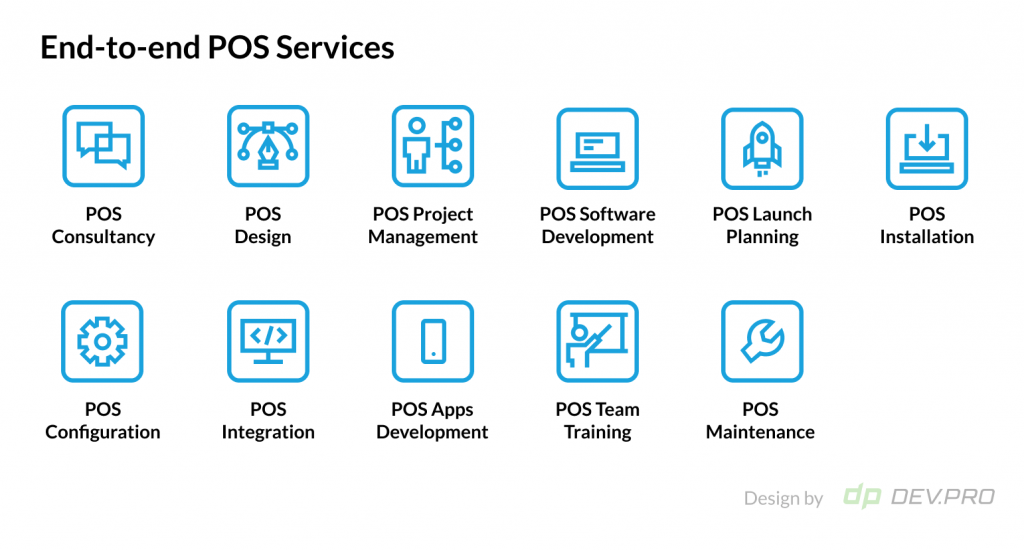
We have reviewed the Point of Sales solutions in detail in the article linked in the heading to this section.
Restaurant Loyalty Software
Loyalty software for restaurants offers a number of features to attract new customers, retain existing ones, and create and push promotions via different channels, like SMS, emails and even IoT devices when in-house.
The most advanced solutions will also have a team-facing end, designed to drive loyalty from waiters, management, chefs, and cleaners by offering a range of tools to incentivize team members, as well as regional contests and gamifying upsells.
Must-Have Features
These features are offered by major providers:
- Member and admin portal
- Loyalty cards
- Promotional engine
- Gift card management
- Coupon management
- Rewards catalog
- Recommendation engine
- RFM analysis
- Reporting & analytics
We have gone through all of the possible combinations of promotional offers for restaurants in our extensive piece on loyalty management program, which is linked in the heading of this paragraph. Check out Dev.Pro’s promo matrix below:
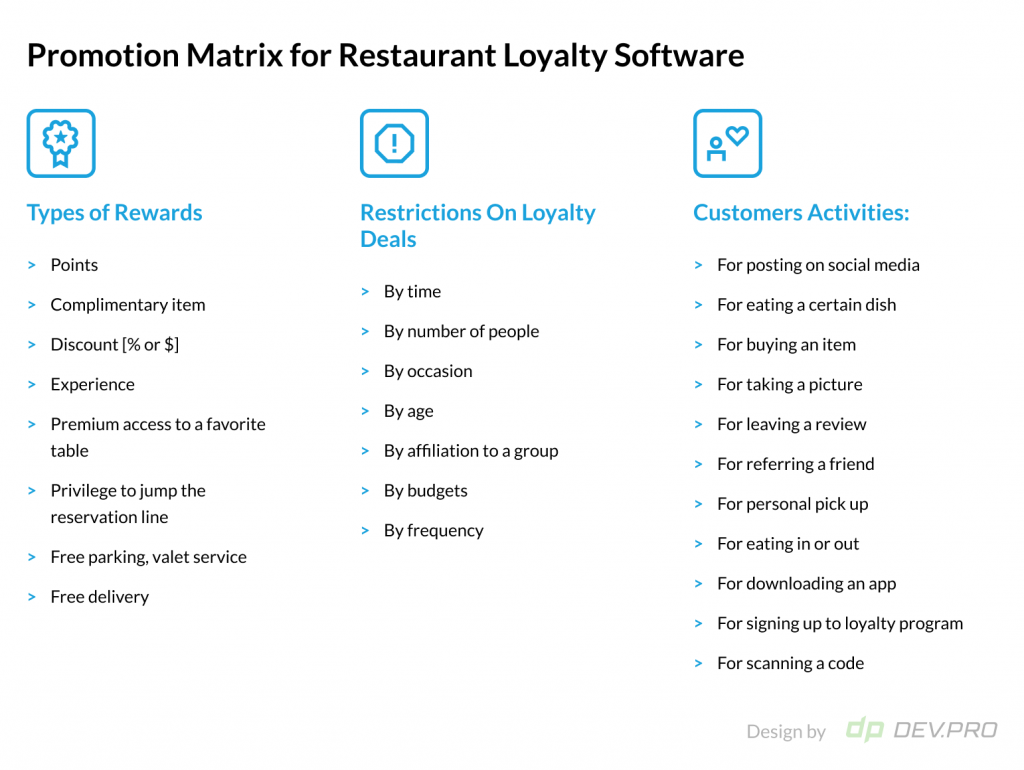
Popular Restaurant Loyalty Software
It’s common knowledge that attracting a new customer is more difficult and expensive than retaining an existing one. In the restaurant industry, that’s so shaped by tastes of a certain cuisine, location and budgets, meaning that customer loyalty becomes critical to a business’s success.
Restaurant Payroll Software
Payroll software for restaurants enables payroll and tax management, as well as scheduling and incentive programs for teams. In an industry where shifts may last just a few hours and tips are subject to stringent regulations, having a reliable, flexible payroll tool is critical for automating HR and accounting routines and minimizing the potential for fines.
Must-Have Features
- Employee & admin portals
- 401K tracking
- Tips management
- Benefits management
- Deduction management
- Tax compliance & management
- New hire onboarding
- Vacation & leave management
- Payroll reporting
Popular Restaurant Payroll Software
This type of software is tightly connected with many other F&B operations functions, so it’s usually integrated with a number of other popular restaurant management systems.
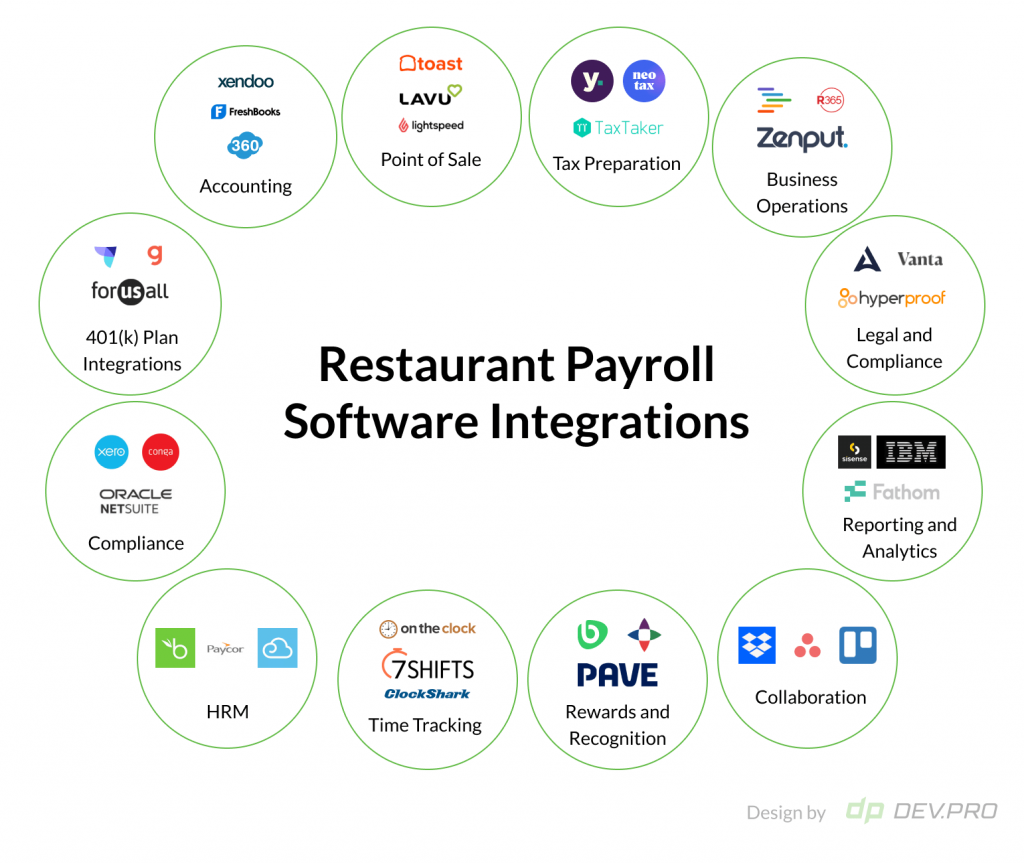
Restaurant Accounting Software
Accounting software for restaurants helps businesses manage their books. This includes inventory management, invoicing, tax management, team payroll, and purchase order management.
It gets more complex depending on the country of usage, as it may need to take into account different currencies, state and legal legislation, complex tax systems, and filing requirements.
Must-Have Features
It’s common practice for all financial software solutions to have SaaS subscriptions for different levels of access. You can find tools that will combine payroll, accounting, and HRM systems individually or combined in a one-stop-shop system.
- Accounts receivable & accounts payable
- Inventory management
- General ledger
- Payroll management
- Tax management
- Billing & invoice
- PO management
- Bank reconciliation
- Reporting & analytics
Popular Restaurant Accounting Software
Restaurant Ordering System
Ordering software for restaurants has been dominated by food delivery unicorns like UberEats, DoorDash, and Glovo. These platforms enable door-to-door digital orders, from the menu and payment, to the delivery. Let’s review some of the must-have features for leading food ordering tools.
Must-Have Features
All major food ordering apps have these key technical functionalities:
- Food ordering
- Search and filtering feature
- Payment & invoicing [QR code, cashless payments]
- Commission management
- Reporting & analytics
- Revenue management & promo engines
- Review and ranking engines
- Delivery management
- Chat & notifications module
Popular Food Ordering & Delivery Solutions
There is a bit of hegemony in this segment, with unicorns taking the lion’s share of the delivery and ordering market. However, some solutions are crafted specifically for SaaS-type uses, allowing individual restaurants to embed these widgets into their websites and apps to enable food ordering and delivery processes.

As the industry evolves at supersonic speed, the Internet of Things for restaurants has seen a significant boost. Let’s quickly touch on a few major developments in the expansion of physical devices in the connected kitchens of today.
IoT for Restaurants
The use of IoT in restaurants and kitchens has been helping the industry address many burning issues, like staff shortages, high turnover, expensive rental, health hazards, and waste management.
Key Functions of Internet of Things in Food Service Industry
Some of the benefits of introduction of connected devices are:
- Automate repetitive processes to address staff shortages & turnover
- Reduce waste management
- Enable smooth operation of machinery due to predictive maintenance
- Lower utility bills and streamline these expenses across a restaurant chain
- Team training and supervision using glasses and computer vision devices
The use of physical peripheral devices in kitchens and on the floor is closely connected with Fast Food Automation, which our software engineers with extensive Restaurant Tech experience have discussed at length.
The use of robots in restaurants and kitchens is a fast growing industry, specifically a trend that has increased with the rise of ghost and virtual kitchens.
Dev.Pro – A Software Development Partner With a Solid RestaurantTech Portfolio
As the smaller players look for a great mix of features and monthly pricing in the top SaaS platforms, bigger players — like franchise food operators — prefer to develop custom restaurant management software.
Why would a business opt for a tailor-made solution? These are primary reasons businesses choose approach:
- Customizability. The solution can be as complex as you need to match the original concept while maintaining a user-friendly interface. A pizza franchise has toppings and monitors the speed of delivery and ordering, while an upscale FSR focuses on loyalty programs and food cost profitability.
- Independence from vendors. There’s no need to wait until there is an industry-wide need for a feature. If you have a custom software, you can kick off design and testing of a specific feature as soon as there is a consensus that it can bring your chain a competitive advantage. This is a privilege of any industry’s trend setters to invent and implement new functionalities and make them popular with clients, gaining all the advantages of disruptors and early adopters.
- Seamless integrations of connected systems. Restaurant management systems are a network of tools with HR, marketing, menu management, accounting, loyalty, and payment functions. The majority of modern restaurants use myriad tools to perform these functions, from CRM and POS devices, to mobile ordering apps and accounting solutions. At the same time, bigger operations need access to real-time reporting and analytics to be able to positively impact revenues during peak hours, as well as manage their inventory and staffing correctly. This is why two-way real-time connectivity is so critical for multiple disparate systems that comprise the ecosystem of restaurant management solutions.
If you are looking for a software development partner for your chain of restaurants, speak to one of our savvy team members. Our diverse yet relevant portfolio includes a number of use cases in the Restaurant Tech industry, including Lavu, Heartland, Pop Menu, Global Payments.
If you are looking for a more detailed deep-dive into the restaurant software development world, we have elaborated a detailed overview of the status quo in this Restaurant Tech 2022 White Paper.
